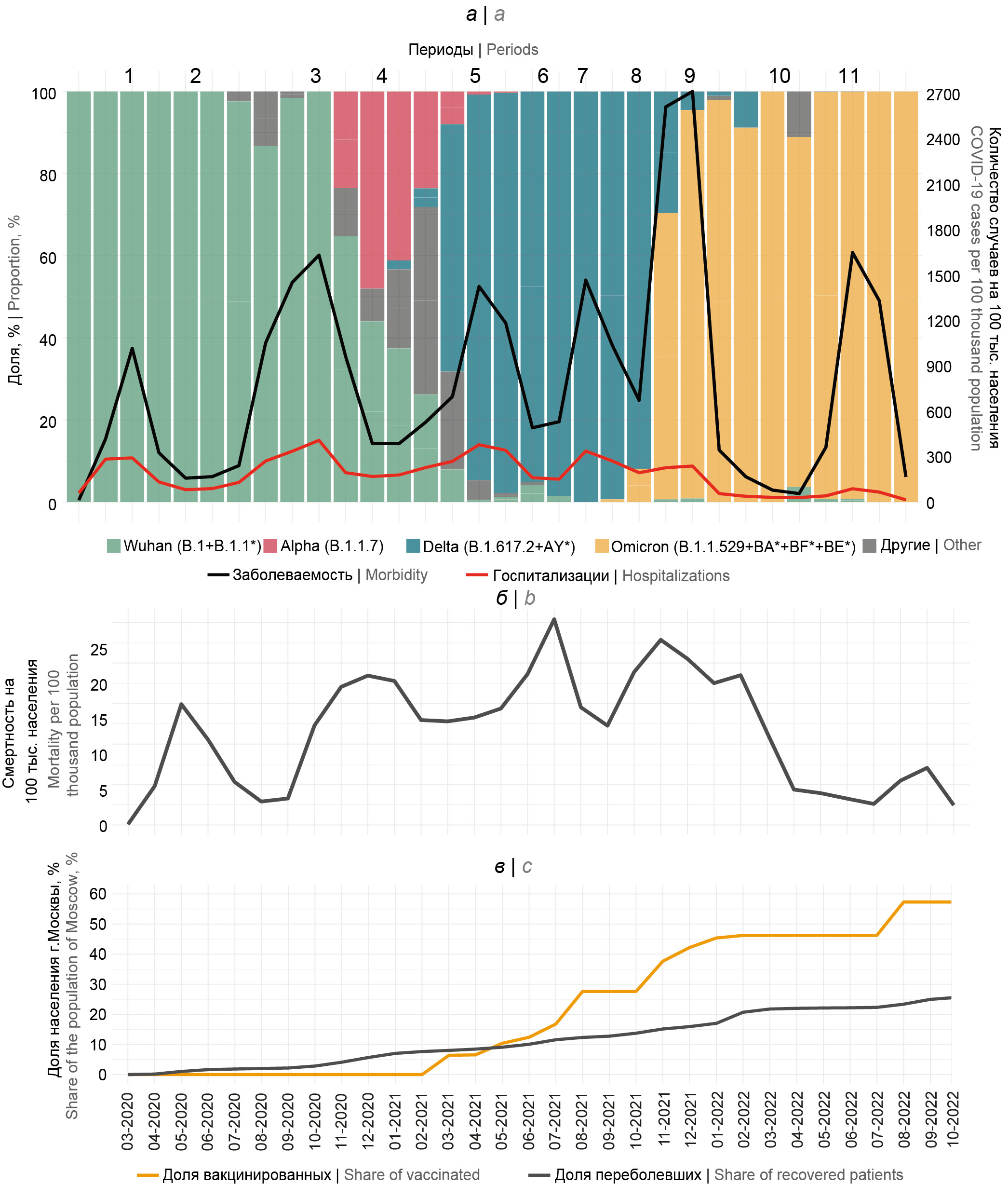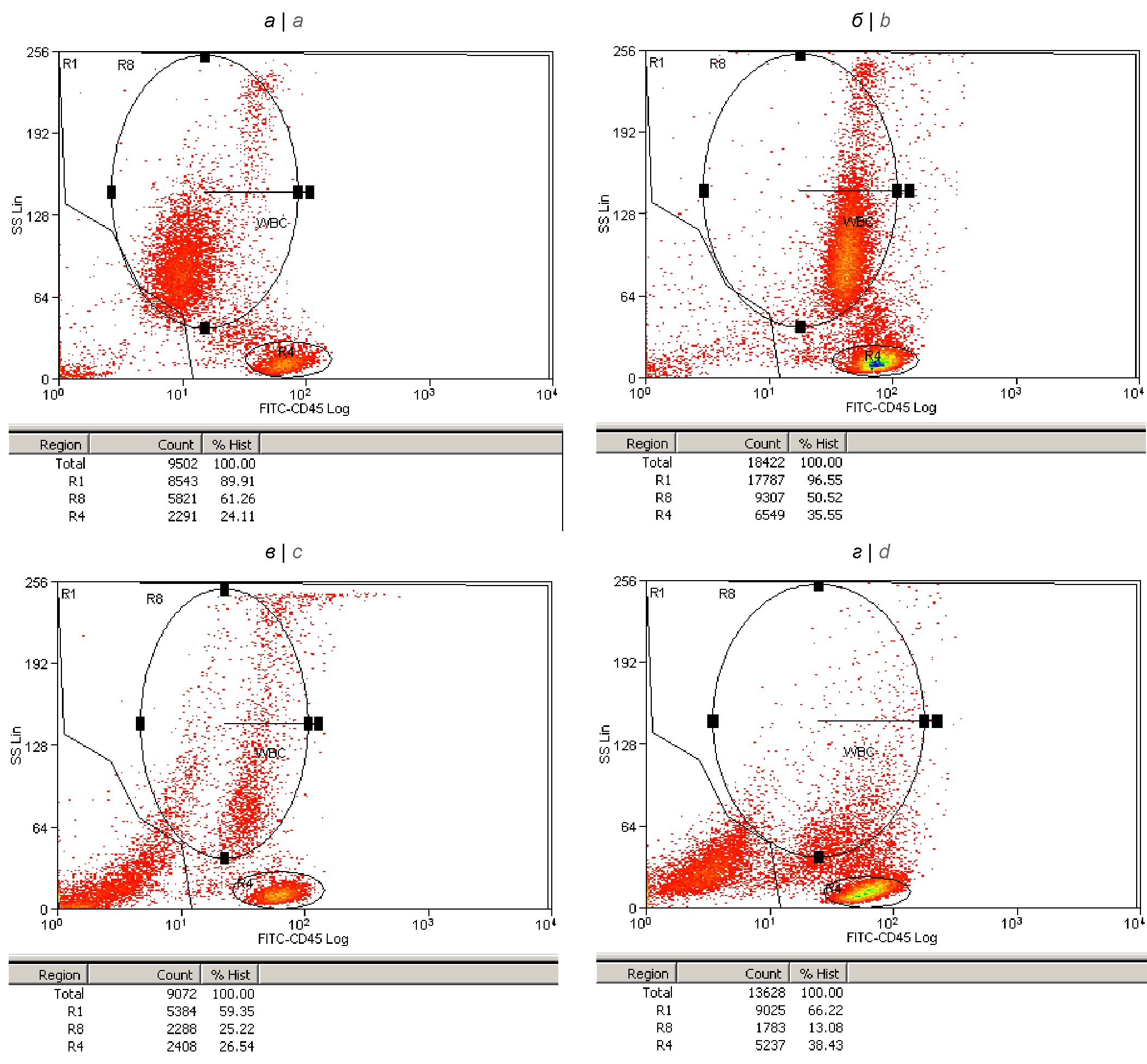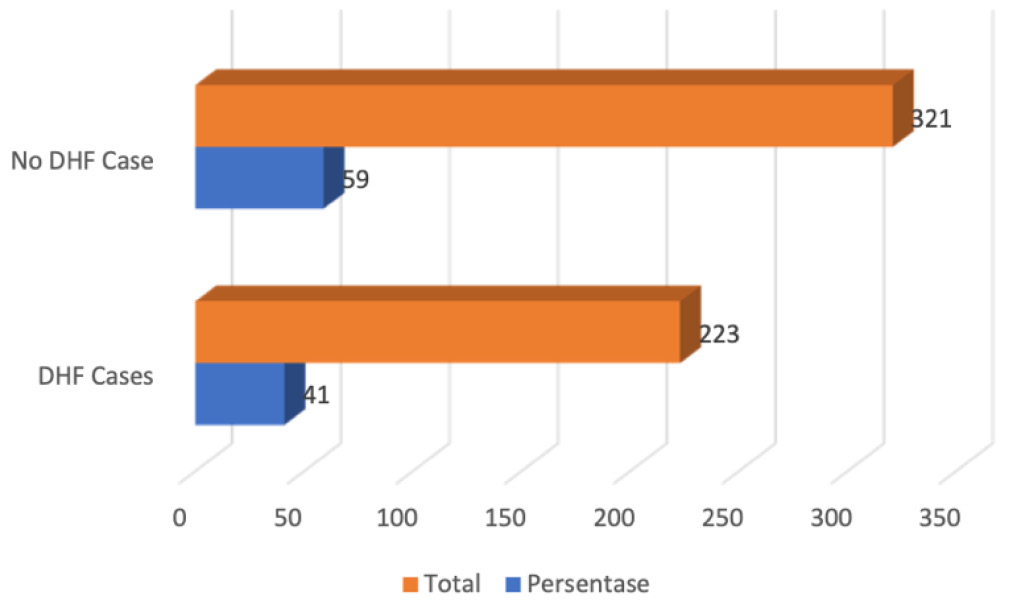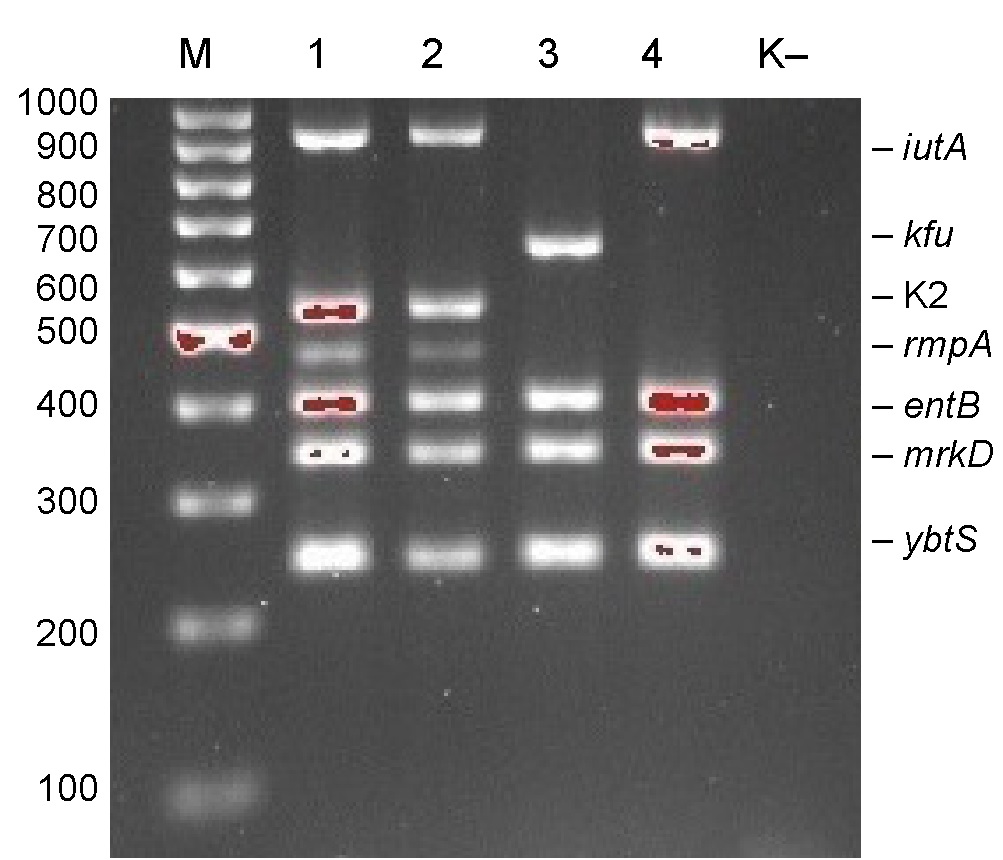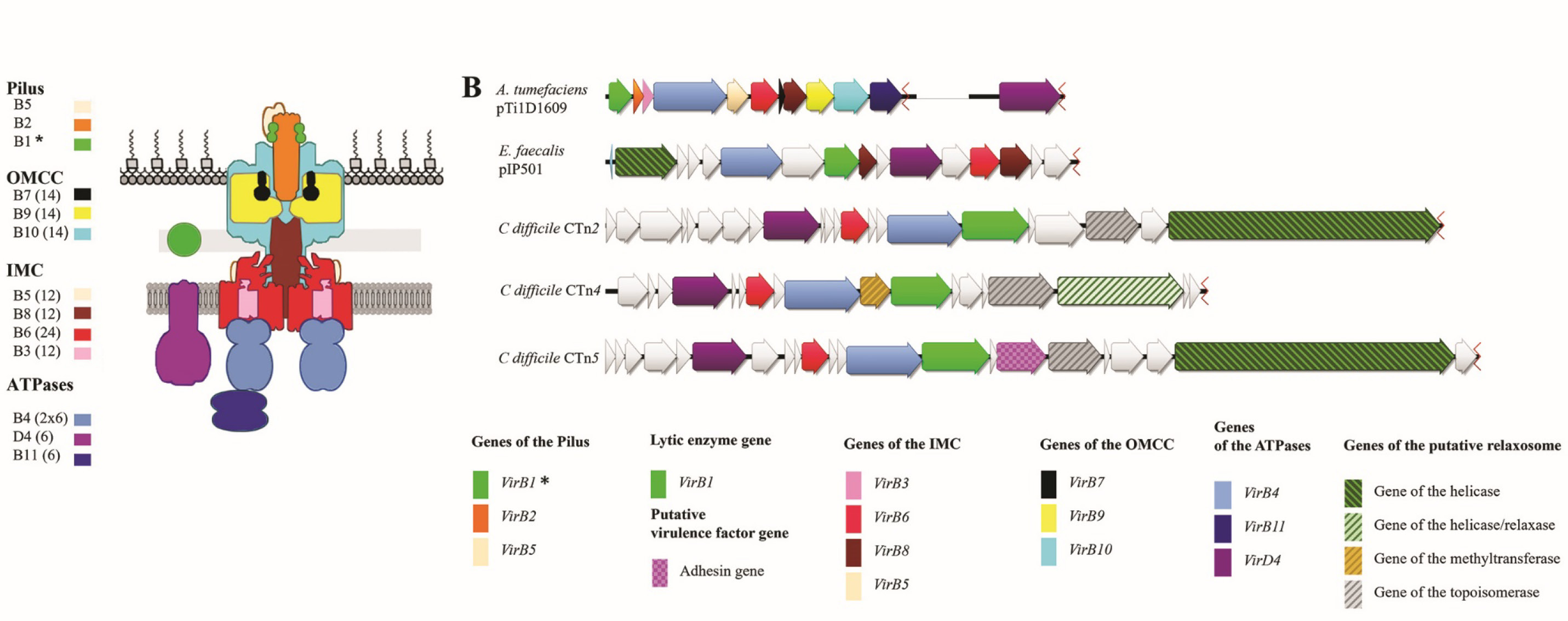Vol 100, No 4 (2023)
- Year: 2023
- Published: 21.09.2023
- Articles: 12
- URL: https://microbiol.crie.ru/jour/issue/view/179
ORIGINAL RESEARCHES
Characterisation of the COVID-19 epidemic process in Moscow and search for possible determinants of the trends of the observed changes
Abstract
Background. Constant assessment of the dynamics of the main characteristics of the epidemic process is the basic function of epidemiological surveillance of infectious diseases. The search for factors that determine changes in the characteristics of the epidemic process makes it possible to develop timely management decisions and reduce the risk of an increase in the scale of the pandemic. Moscow is the main centre of attraction for the population of other Russian regions with the most complex structure of social links and the highest population density.
The purpose of the study is to identify factors that potentially determine the trends of observed changes using a molecular epidemiological analysis of the main characteristics of the epidemic process of a new coronavirus infection (COVID-19).
Materials and methods. For the analysis, the data of Russian national genome sequence database of SARS-CoV-2 virus (VGARus) were combined with information on morbidity and mortality presented at the official internet resources “стопкоронавирус.рф” and Yandex DataLens, the dynamics of vaccination, COVID-19 disease incidence and hospitalization from the portal Gogov.ru. A multicentre retrospective observational epidemiological study was conducted to examine the sex and age structure of hospitalised patients. Anonymized case histories of patients with COVID-19 collected at different follow-up periods in the institutions of Moscow (41,561 cases) served as a source of data for the sex and age structure analysis.
Results. We identified 11 periods with significantly different complex epidemiological characteristics. A decrease in the incidence among young people of working age during the period of restrictive measures was revealed. In 3 out of 11 worsening of the epidemic situation coincided with the beginning of the circulation of a new genetic variant of the pathogen COVID-19 (variants Wuhan, Delta, Omicron). A decrease in the incidence in the summer period was noted, regardless of the circulating genetic variants.
Conclusion. A significant part of the observed dynamics of the characteristics of the epidemic process in Moscow can be explained by the properties of the pathogen, seasonality and dynamics of magnitude of the herd immunity. The influence of the dynamics of the herd immunity indicators on the course of the epidemic process is to be studied further.
 267-284
267-284


Spectrum and functional properties of ERG11 gene mutations in fluconazole-resistant Candida albicans strains isolated from HIV-infected patients
Abstract
Rationale. The low efficacy of azole antimycotics in treatment of Candida infections, especially in HIV-infected patients, is often associated with overexpression of the ERG11 gene in Candida spp., which results in increased production of ergosterol – the target of the above antimycotic drugs. Researchers have found ERG11 gene mutations that can modify its overexpression effects by increasing or decreasing it. However, the findings reported by different laboratories and countries are highly contradictory.
The purpose of the study is to explore the spectrum and functional properties of ERG11 gene mutations in fluconazole-resistant Candida albicans strains isolated from HIV-infected patients.
Materials and methods. The study was performed using 10 C. albicans strains inherently resistant to fluconazole and voriconazole and isolated from the oropharynx of HIV-infected patients; the strains were provided from the collection of the Gabrichevsky Moscow Research Institute of Epidemiology and Microbiology. The strains were assessed by their sensitivity to antimycotic agents: anidulafungin, micafungin, caspofungin, posaconazole, voriconazole, itraconazole, fluconazole, amphotericin B, 5-flucytosine. Expression levels of the ERG11 gene were measured by quantitative PCR. ERG11 gene mutations were identified by Sanger sequencing.
Results. Five mutations (E266D, G464S, I471L, D116E, and V488I) were detected in the ERG11 gene in seven C. albicans strains; six strains carried non-associated co-occurring mutations. Increased expression of the ERG11 gene was found in six C. albicans strains. The V488I mutation demonstrated a strong negative association with the increased expression of the ERG11 gene (r = –0.845; p < 0.05). The minimum inhibitory concentration (MIC) in strains carrying mutations was a hundred times as low (p < 0.05) as MIC in strains without mutations. In mutation carriers, posaconazole and itraconazole MICs were on average 16.5 times as low as MICs of voriconazole and fluconazole (p < 0.001). The presence of mutations in the ERG11 gene had almost no effect on MICs of the tested antimycotics of the echinocandin, polyene, and pyrimidine groups.
Conclusion. Multiple mutations were detected in the ERG11 gene in most of the C. albicans strains isolated from HIV-infected patients and resistant to fluconazole and voriconazole. Except for the V488I mutation, the detected mutations were not associated with the overexpression of the ERG11 gene and decreased the effects of overexpression of the ERG11 gene by up to 100 times, though they did not eliminate the inherent resistance to triazole antimycotics.
 285-292
285-292


Assessment of changes in the phenotype, intensity of degranulation, death and lysis of neutrophils in ex vivo modeling of Staphylococcal bacteremia
Abstract
Introduction. At present, it is important to study the interaction of Staphylococcus aureus with human innate immunity cells under conditions of ex vivo bacteremia modeling, but not only in experiments with phagocytes previously isolated from the blood.
Purpose: comparative assessment of changes in the phenotype, intensity of aurophilic degranulation, death and lysis of neutrophils in whole blood samples from apparently healthy donors following the addition of live and killed microbial cells of S. aureus ATCC 6538 (209-P).
Materials and methods. Bacteremia was modeled by adding microbes to whole blood (with heparin) at doses ranging from 108 to 101 mc/ml. The bactericidal effect was determined at different time points of blood incubation at 37°C (for 6 hours) by the microbiological method. The blood leukocyte immunophenotyping was performed using flow cytometry according to the Lyse/No-Wash protocol to determine the expression of markers of azurophilic degranulation (CD63), early apoptosis (CD95) on the surface of neutrophilic granulocytes (NG) and cell adhesion (CD62L), as well as to assess the surface expression density of the molecular trigger of netosis FcᵧRIIIb (CD16) and tyrosine protein phosphatase (CD45), which is a regulator of FcR-mediated cell signaling during phagocytosis and netosis. The presence of degenerative changes in NG was confirmed by microscopy in the analysis of blood smears stained according to Romanovsky–Giemsa.
Results. Significant differences were revealed in the response of human blood NG to live and killed S. aureus cells according to the studied phenotypic parameters. Only live microbes triggered azurophilic degranulation in NCs and stimulated, starting from 2 h incubation, the appearance of a large number of NG with the CD95+ phenotype in the blood. In addition, live bacteria induced in phagocytes twice as much functional rearrangement in terms of CD45 expression. They induced a rapid decrease in the density of CD16 expression on NG and activated NG lysis in the blood with an intensity depending on the initial microbial concentration. Following 6 h incubation at concentrations of more than 105 mc/ml, flow cytometry detected the presence in the blood of a population of low density neutrophils characteristic of sepsis (Low Density Neutrophils — with the CD63+CD16low phenotype), whose cells are prone to spontaneous autolysis (netosis).
Conclusion. Under the conditions of ex vivo modeling of bacteremia, various strategies of human blood neutrophils in the implementation of the mechanisms of protection of the macroorganism from infection were evaluated, and the prospects of using the obtained information to identify individuals at high risk of developing staphylococcal sepsis were determined.
 293-305
293-305


Genetic characterization and phylogenetic analysis of human norovirus infection in individual municipalities of the Sverdlovsk region in 2022
Abstract
Introduction. Human Noroviruses (HuNoV) are highly contagious pathogens responsible of acute human norovirus infection (HuNoVI). GII.4 is the prevailing norovirus genotype in the incidence of gastroenteritis worldwide. Currently there are no studies on the molecular monitoring and phylogenetic analysis of HuNoV in the territory of the Sverdlovsk region, therefore it is not possible to objectively assess their genetic diversity.
The aim of the study is to carry out genotyping and phylogenetic analysis of HNoVI in municipalities of the Sverdlovsk region: Ekaterinburg, Nizhny Tagil, Kamensk-Uralsky in 2022.
Materials and methods. Fecal samples were collected from children suffering from HuNoVI in the municipalities of the Sverdlovsk region. Viral RNA was extracted from stool samples followed by reverse transcription polymerase chain reaction with degenerate primers flanking the ORF1/ORF2 junction. The amplified samples were genotyped by Sanger sequencing. Multiple sequence alignments were carried out and phylogenetic trees were constructed.
Results. The total number of studied samples was 220. According to sequencing results, 73 positive sequences of HuNoV were typed, which represents 33% of the total volume of the studied samples. The largest share of genotypes is occupied by noroviruses GII (58%), noroviruses GI (42%). Noroviruses GII.17, GI.3 were the dominant genotypes. Phylogenetic analysis demonstrates that the identified sequences on the territory of the Sverdlovsk region have the smallest genetic distance, which gives grounds for their unification into a common cluster.
Conclusion. For the first time, a genetic analysis of HuNoV was carried out in the territory of the Sverdlovsk region. The norovirus genotyping system based on the amplification of the ORF1/ORF2 region makes it possible to successfully identify various genotypes of noroviruses from the Sverdlovsk region. It has been confirmed that GII noroviruses remain the dominant genetic group. The results of phylogenetic analysis demonstrate the greatest homology in the formed clusters between isolates from Ekaterinburg, Nizhny Tagil, Kamensk-Uralsky.
 306-313
306-313


Analysis of entomological indicators and distribution of Aedes aegypti larvae in dengue endemic areas
Abstract
Background. The cause of dengue fever’s endemicity is vector larvae density, with Aedes aegypti as the prime vector. Bandung municipality is a high dengue fever endemic area. Hence, studying the habitat characteristics of the Aedes mosquito is essential to controlling the populations of mosquitos.
Purpose. This study aimed to identify the aedes larvae breeding sites and the relationship between the breeding risk index, hygiene risk index, maya index, and the existence of larvae with the incidence of dengue fever.
Method. The design used in this research was a cross-sectional survey. The sampling technique used simple random sampling. The quantity of the sample was 544 directly observed houses.
Results. The entomological parameters obtained were house index (23.89%), container index (7.81%), Breteau index (50.73%), and larva free number (76.10%). The breeding risk index, hygiene risk index, and maya index are in the low category. The chi-square test conveyed that the breeding risk index, maya index, and the existence of larvae were significantly associated with the incidence of dengue fever.
Conclusion. The entomological index may influence the high incidence of dengue fever. These findings and results may help the authorities to improve mosquito nest eradication in attempts to prevent dengue transmission.
 314-320
314-320


Antimicrobial resistance and virulence of carbapenem-resistant Klebsiella pneumoniae strains isolated from children in intensive care and surgical units
Abstract
Introduction. Infections associated with carbapenem-resistant (Carba-R) Klebsiella pneumoniae (KP) are a serious public health problem because they lead to an increase in hospital stays, treatment costs, and an increase in patient morbidity and mortality.
Aim — to characterize antimicrobial resistance, virulence factors and genotypes of Carba-R KP strains isolated from patients in intensive care and surgical units.
Materials and methods. In total, 455 KP strains that were resistant to meropenem and/or imipenem, or susceptible to meropenem and/or imipenem at increased exposure were collected in 2018–2020. For further analysis, total 90 KP strains isolated from clinically significant sites — blood/сerebrospinal fluid/urine/lower respiratory tract/wounds/abdominal cavity of patients in intensive care and surgical units were selected. Antibiotic susceptibility was determined using the broth microdilution method. Carbapenemase genes were detected by real-time PCR. The virulence genes and K1/K2 capsular serotypes were determined by multiplex PCR. Sequence types (ST) were determined using multilocus sequence typing.
Results. Most of the selected isolates (97%) were recognized as extensively drug-resistant pathogens, three isolates were classified as multidrug-resistant pathogens. The major determinant of carbapenem resistance was blaOXA-48-like (53%), blaNDM-group was detected in 13% strains, a combination of blaNDM-group and blaOXA-48-like genes was found in 31% isolates. Two isolates harbored blaKPC-group. Most of the isolates had the virulence genes entB (100%), mrkD (99%), and ybtS (78%). The iutA gene was found in 16% strains. Four isolates had kfu gene and four strains carried rmpA gene. The K2 capsule type was determined in 13% isolates. Four ST dominated in the studied population: ST395 (26%), ST2975 (19%), ST198 (12%) and ST307 (11%).
Conclusion. Carba-R KP isolates had a high level of resistance not only to carbapenems, but also to antibiotics of other classes. Carbapenem resistance was mainly associated with OXA-48 carbapenemase. The entB, mrkD and ybtS genes were the main determinants of virulence. The epidemically successful clones CG395 and CG307 were the predominant genetic lines. Resistance to antimicrobials was combined with the presence of various virulence factors. The data obtained are important for the epidemiological surveillance of the spread of KP and have important clinical implications.
 321-332
321-332


REVIEWS
A modern view of diarrheagenic Escherichia coli — a causative agent of acute intestinal infections
Abstract
Acute intestinal infections caused by Escherichia coli affect the gastrointestinal tract, leading to development of diarrheal syndrome, intoxication, and, in some cases, generalization of the pathological process. Diarrheagenic E. coli (DEC) strains differ from non-pathogenic (commensal) strains by the presence of specific virulence genes, pathogenesis characteristics, clinical and epidemiological manifestations of the diseases they cause. Based on the virulence determinants, 6 pathogenic DEC groups are distinguished: enteropathogenic, enterotoxigenic, enteroinvasive, shiga toxin-producing, enteroaggregative, diffusely adherent E. coli strains. The strains of each pathogenic group have distinct pathogenic mechanisms responsible for inflammatory processes in different compartments of the human intestine, which are clinically manifested as diarrheal syndrome. This paper presents a review of current scientific publications on epidemiology, pathogenesis, genetic properties, and antigenic characteristics of pathogenic E. coli. Although DEC biological properties have been extensively studied, many aspects require deeper insights to develop effective laboratory-based diagnostic techniques, treatment methods, epidemic control measures, and prevention strategies against E. coli infections.
 333-344
333-344


Type 4 secretion system in Clostridioides difficile: Structural features and its role as a pathogenicity factor
Abstract
Clostridioides difficile is a gram-positive microorganism causing damage to the human intestinal wall, clinically manifesting as antibiotic-associated diarrhea and pseudomembranous colitis. C. difficile infection remains a serious problem; the increasing frequency of nosocomial outbreaks and the emergence of community-acquired forms heighten the need for new prevention and treatment methods. The pathogenesis of C. difficile infection is associated with the toxins produced by bacteria and a large group of proteins promoting the replication of the pathogen in host tissues and its spread in the human population. Recent studies show that mobile genetic elements play a key role in the high virulence of C. difficile. Type 4 secretion systems (T4SS) are significant components of these elements; their impressive diversity among gram-positive microorganisms in general and in C. difficile, in particular, implies their high evolutionary and, consequently, medical significance. Further studies of the T4SS composition and structure will provide a deeper insight into mechanisms underlying the development of respective infections and will help outline pathogenically grounded approaches to prevention and treatment of diseases caused by C. difficile. On the other hand, the key components of the secretion machinery of the pathogen can be used in bioinformatic analysis and for searching new adaptive clusters in the genome of highly virulent strains.
 345-353
345-353


Promising pharmaceutical development of vaccines for the prevention of meningococcal infection
Abstract
Meningococcal infection (MI) refers to anthroponoses; is an acute infectious disease with an aerosol transmission mechanism, characterized by various forms of the infectious process: from local (nasopharyngitis) and asymptomatic infections to generalized forms of invasive infection with the development of meningococcemia and meningitis. The causative agent of MI is meningococcus (Neisseria meningitidis) that belongs to the pathogen risk group 2. Preventive vaccination against MI is included in the calendar of preventive vaccinations according to epidemic indications. The problem of MI retains a great medical and social significance for Russian health care due to the continuing high rates of associated mortality, disability, high costs of treatment and rehabilitation. Vaccines against five of the six main N. meningitidis serogroups have been registered worldwide. Serogroup X vaccine is under development. Recently, there has been an increase in the heterogeneity of the meningococcal population due to serogroups W, Y, and X. The polysaccharide vaccines developed in Russia have restrictions on their use, and there is no full-cycle production of meningococcal conjugate vaccines in the Russian Federation. Given the above, the development and registration of new vaccines against MI is an urgent task.
The purpose of this work is to analyze the current state of development of vaccines for MI prevention. Currently, depending on the production technology, the following types of meningococcal vaccines are available: polysaccharide, conjugated, based on outer membrane vesicles (OMV), protein and based on synthetic polysaccharides. Serogroup-targeted meningococcal vaccines are effective in reducing the public health burden of invasive MI. Polysaccharide conjugate and protein/OMV vaccines are among the most promising vaccines for most invasive meningococcal serogroups. In modern conditions, with the progress in technologies for future polysaccharide conjugate vaccines, new opportunities are opening up for the use of such approaches as chemical/enzymatic synthesis, improved characteristics of the carrier protein, and site-specific conjugation. The development of a single vaccine against the main invasive meningococcal serogroups, rather than its individual antigenic variants, does not lose its relevance. It is timely to develop in the near future a vaccine against N. meningitidis serogroup X, which was previously a rare cause of sporadic meningitis, but has caused outbreaks in various African countries in 2006–2010 and in recent years.
 354-363
354-363


Species characteristics of bacteria of the genus Lactobacillus identified in different loci of the human body (literature review)
Abstract
Bacteria of the genus Lactobacillus are inhabitants of the surfaces of human mucous membranes, such as the oral cavity, digestive and urogenital tracts. Moreover, there is evidence that they are found in breast milk and sputum. In view of the many genetic differences, metabolic abilities and other functions of the species included in this genus, a revision of the classification of the genus Lactobacillus is proposed in 2020. Recently, in the scientific medical literature, the issues related to the influence of lactobacilli on the human microbiome, maintaining health and preventing pathological conditions of the body have been actively discussed. This review is devoted to the functional characteristics and analysis of the species diversity of Lactobacillus spp. circulating in various body systems, their participation in the formation and regulation of defense mechanisms. However, negative impacts are also noted, most often associated with the transfer of genetic determinants of resistance to antimicrobial drugs from lactobacilli to gram-negative microbiota.
 364-375
364-375


ANNIVERSARIES
 376-378
376-378


 379-380
379-380










